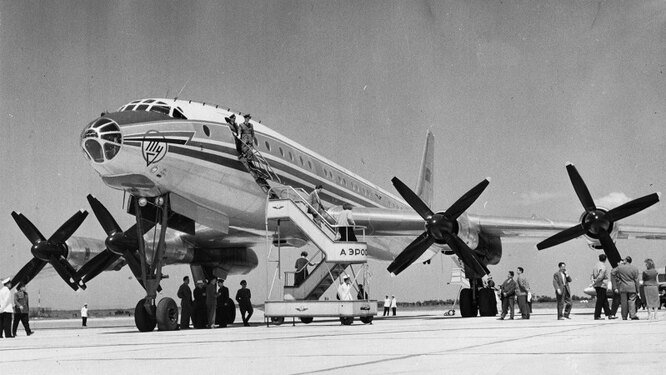In 1959, Aeroflot acquired a new flagship – the largest passenger aircraft in the world, the Tu-114. It was created based on the Tu-95 strategic bomber, so the plane turned out to be, so to speak, original.
The content of the article:
- Akhtung, the Russians are flying!
- Bom… sorry, luggage
- “Navigator, where should we steer?”
- Stabilizer, landing gear, wing
- Engines
The Tupolev Design Bureau received the task of being the first long-haul airliner in the history of the USSR in 1955. The task was not easy: it was necessary not only to create an aircraft with a high range and level of comfort but also its appearance to wipe the nose of the West – after all, aviation is a high-tech industry. In addition, it was assumed that this plane would fly abroad a lot and become a showcase of Soviet ideology. And the deadlines were tight.
Without hesitation, Andrei Nikolaich (chief designer Andrei Nikolaevich Tupolev) took the Tu-95 strategic bomber, which had just begun to enter service with the troops, as a basis.
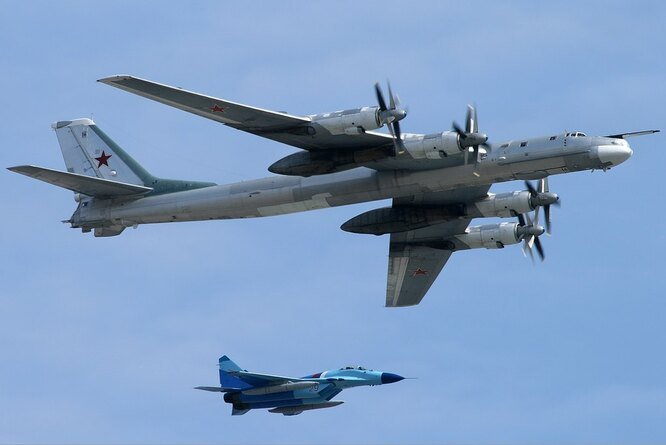
Akhtung, the Russians are flying!
At first, the passenger aircraft project even bore the name Tu-95P. However, later, its name was changed to Tu-114: according to the new tradition, the civil aircraft of the Tupolev Design Bureau received a three-digit index with a four at the end. And they did the right thing – imagine what kind of panic the news of the arrival of the Tu-95 would cause in the world (who will remember what the “P” at the end of the word means).
At first, the passenger aircraft project was called Tu-95P.
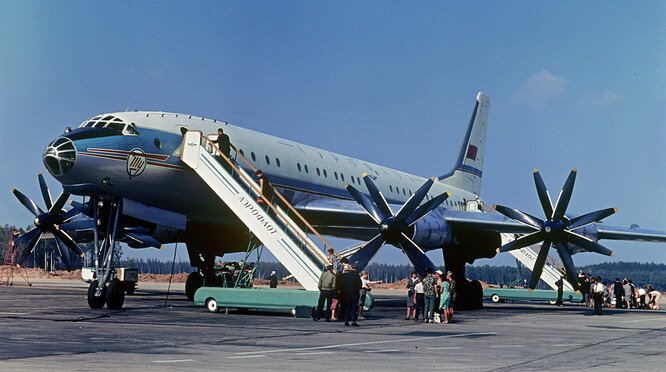
Bom…sorry, luggage
There was little experience creating world-class passenger aircraft, and the habit of thinking militarily created peculiar incidents. One of them was loading luggage: at first, the Tu-114 was supposed to be loaded vertically from under the fuselage, like bombs. But then they finally realized (or maybe they noticed, as they do in other countries) that it was better to make it horizontal.
“Navigator, where should we steer?”
Another feature inherited from the bomber was the navigator’s canopy in the forward fuselage. This feature is not needed in civil aviation, but in military aviation, it is very much so: the navigator sits in front to accurately conduct bombing.
Navigator’s lantern – a legacy of strategic aviation
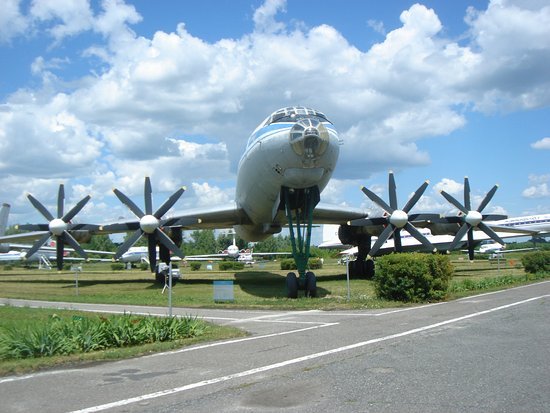
The navigation light was abandoned on subsequent passenger aircraft, such as the Il-62 and Tu-154. However, specifically, in the case of the Tu-114, it played an important role when taxiing at airports. Due to the high altitude of the passenger plane and the raised nose, the view from the cockpit was not the best, and the navigator corrected their maneuvers on the ground.
Stabilizer, landing gear, wing
The fuselage of an airliner and a bomber are entirely different, but the wing and tail are very similar. Due to higher requirements for takeoff and landing characteristics and a thick fuselage, the flaps of the Tu-114 are slightly increased in area compared to the missile carrier. The horizontal stabilizer is located lower on the fuselage and can be adjusted at an angle from minus 1.5° to +5.5°.
In particular, an adjustable stabilizer was needed because of one chassis feature. The landing gear of the Tu-114 is very high, especially the nose. The huge niches into which it hides during flight create strong turbulence on takeoff, worsening the wing’s lift. Therefore, it was necessary to increase the aircraft’s balancing capabilities.
Engines
The passenger airliner also inherited NK-12 engines from its ancestor. Today, 70 years after their creation, they are still the most powerful turboprop engines in the world.
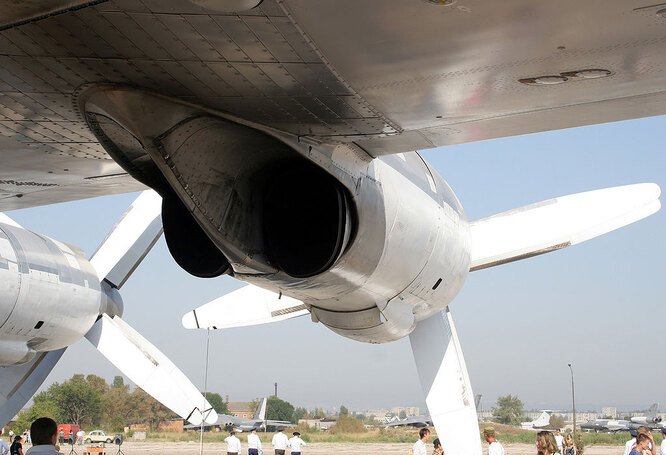
Their unique feature is coaxial double propellers. Thanks to these engines, the Tu-114 developed almost the same cruising speed as turbojet aircraft of Western companies, 770 km/h. At the same time, it was much more economical. Moreover, this criterion surpasses even the long-range Il-62, which replaced the 114th – up to 4.5 tons of fuel per hour versus 7 tons for the Il.
The same engines made the Tu-114 the noisiest passenger aircraft in the world, for which Soviet technicians nicknamed it “Snake Gorynych.” On the one hand, noise is terrible for travelers and airport workers. On the other hand, the sound also created a kind of propaganda effect. Due to the noise, our plane was subconsciously perceived as more powerful, and this is precisely the impression that the bosses of the Soviet Union wanted to create.
